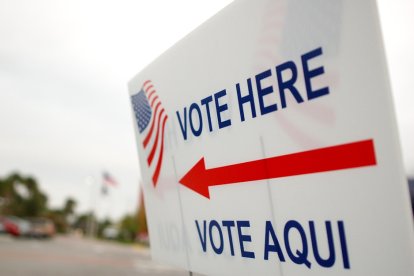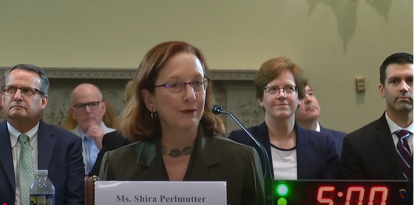The Republican vote has risen the most where there is a greater Hispanic presence
In districts where the Hispanic population exceeds 25% of the population, the GOP has fared better.

Voto Hispano / Erik Hersman (Flickr).
The Hispanic vote in the last election demonstrates what we have been seeing for the last decade: it's no longer a guaranteed vote. The most striking example is Miami-Dade, the most populous county in the state of Florida, and where 70% of the population is Hispanic. The Republican Party has won over this district, something which has not happened for over 20 years.
It is interesting to see the general trend, but it is also interesting to go into detail of the areas in which areas the Hispanic vote has changed, and those in which it has not. Phillip Wallach, from the American Enterprise Institute, helps us to understand some of the underlying aspects in greater detail.
Wallach notes that the Hispanic vote's path to the Republican Party has taken a small step in 2022 compared to what the polls indicated. Wallach recalls CNN's exit polls. They show that the 40-point gap between the Democratic Party and the Republican Party in 2018 has shrunk to 21; practically half. "Put another way, one in ten Hispanics have switched their vote from Democrat to Republican in the last four years."
Republican Party: exceeding expectations
We already knew this, but Wallach makes a different contribution. He conducts a detailed, district-by-district survey. It focuses on the 401 contests that pitted only a single Democratic candidate against a single Republican candidate. Part of what is the expected outcome in 2022, based on the direction of the vote in the 2016 and 2020 presidential elections. What it uses for this is The Cook Political Report's, Partisan Vote Index. This index shows how much each district favors one or the other of the major parties.
Once he knows what the expected outcome is for each district, Wallach compares the 2022 results. But it distinguishes those districts further by also measuring those with a Hispanic population above or below 25%. And what he notes is that "we can see that many of the top-performing Republican candidates (again, relative to expectations) were in districts with higher Hispanic populations."
5.3 points more in the most Hispanic districts
On average, the Republican Party has outperformed the outlook based on the Partisan Vote Index by 1.4 points. But in the 328 districts where the Hispanic population was less than 25%, the GOP's average gain was 0.5 points. Meanwhile, in the 73 districts that exceeded this Hispanic population, the performance has been much better: they have exceeded expectations by 5.3 points. A big difference. Wallach gives several examples:
The border
On the other hand, an analysis by Suzanne Monyak for Roll Call shows something that only apparently contradicts the data analyzed by Phillip Wallach. In recent elections, the Republican Party has lost in districts with a high incidence of the Hispanic population, and which are very close to the border. For example:
These results do not contradict the findings of Phillip Wallach. First, Suzanne Monyak's analysis refers to a specific area, the districts that share a border with Mexico. And second, what Wallach is talking about is the Republican Party's ability to beat the predicted results, not necessarily victory.
Monyak's analysis looks at District 16, which includes the city of El Paso. There, the Democratic candidate leads the Republican candidate by 26.6 points, with 83% of the vote counted. And in the district of Laredo (28), the difference is 13.4 points, with 87% of the vote counted. Mayra Flores failed to repeat her victory in the 34th district, where she lost to Democrat Vicente Gonzalez by 8.6 points.
The analyst also points out that
Campaign strategy
Monyak points out that part of these disparate results is due to candidates' budgets, and ad spending strategies. But it also points to the fact that the Republicans' hard position on border security rhetoric may have hurt them.
The majority of Hispanics believe President Biden should do more to control the border. So Monyak's hypothesis is not very safe. But, given that it refers to those who live on the border, their opinion could be different from the rest. Nevertheless, there is no specific survey in this regard.
RECOMMENDATION





















